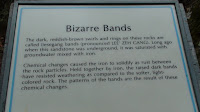
Imagine holding a wild bird in your hands. You and your kids can.
Bird banding has been used to study wild birds since the late 1800s to understand migration and anatomy.
Your local park and recreation department or conservation site may allow the public to join in the efforts.
We lived near Wesselman Woods Nature Preserve, located near Evansville, Indiana and owning 190 acres of virgin forest.


 The naturalist put up nets and captured birds. The kids were so excited to hold the bird in the bag. Then the naturalist explained why they record bird species and quantities and showed how they add the tiny bird band without hurting the bird. As an extra treat, each kid got to hold one bird and release the bird. We saw a variety of birds in such a short time and saw them so close. We marveled at their bright colors and beautiful feathers. The kids were delighted to touch the birds. No binoculars needed!
The naturalist put up nets and captured birds. The kids were so excited to hold the bird in the bag. Then the naturalist explained why they record bird species and quantities and showed how they add the tiny bird band without hurting the bird. As an extra treat, each kid got to hold one bird and release the bird. We saw a variety of birds in such a short time and saw them so close. We marveled at their bright colors and beautiful feathers. The kids were delighted to touch the birds. No binoculars needed!Bird banding connects with migration; it's seasonal, so plan ahead. Here's seven places you can take your child to bird banding (note some experiences may be "demos" and less "hands on").
1. Forest Preserves of Winnebago County - Durand, IL (near WI border) - June
Free event at Colored Sands Forest Observatory, one of the largest small bird banding operations in the country that is still open to the public. Event targeted to Kingergarten to 6th grade students and includes a hike within the three hours.
2. Three Rivers Park District - Lowry Nature Center, Victoria, MN - multiple dates
First public nature center built in the Twin Cities invites groups of 10 or more for free. Songbirds trapped, studied, and tagged with numbered wings.
3. Cleveland Metro Parks - North Olmsted, OH - January
Rocky River Nature Center captures birds from the feeder and bands them.
4. Bird Walk and Bird Banding - Southern Pines, NC - October
Weymouth Woods has a bird banding station. Free event takes 2-3 hours and includes a 2 mile hike. Check out www.ncparks.gov
5. Smithsonian Migratory Bird Center - Washington DC
Free event at the National Zoo where zoo scientists conduct bird banding demonstrations. Four hour family festival includes a book signing.
6. Creek Band Farm Kids Bird Banding - Fremont, OH, Sandusky County Parks Districts
1.5 hour event to learn why and get close up (birds in the hand!). Check out lovemyparks.com
7. Bird Conservancy of the Rockies - multiple locations and dates
- Ridgeway Banding Station - Ridgeway, CO - open house in Sept.
- Ela Banding Station - Grand Junction, CO - September to mid October
- Chatfield Banding - Littleton, CO - Aug. to Oct.
- Fort Collins Banding - Fort Collins, CO - April to May
- Barr Lake Banding - Brighton, CO - Aug. to Oct.
- Chadron Station State Park - Chadron, NE - open to the public Labor Day weekend
- Wildcat Hills Banding Station- Gering, NE - schedule a program







